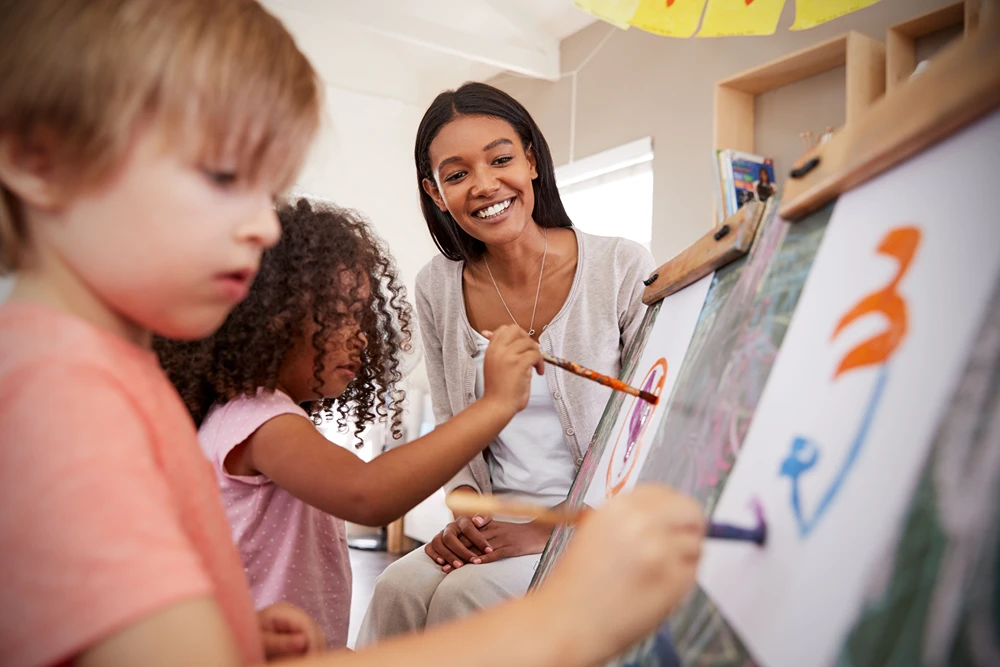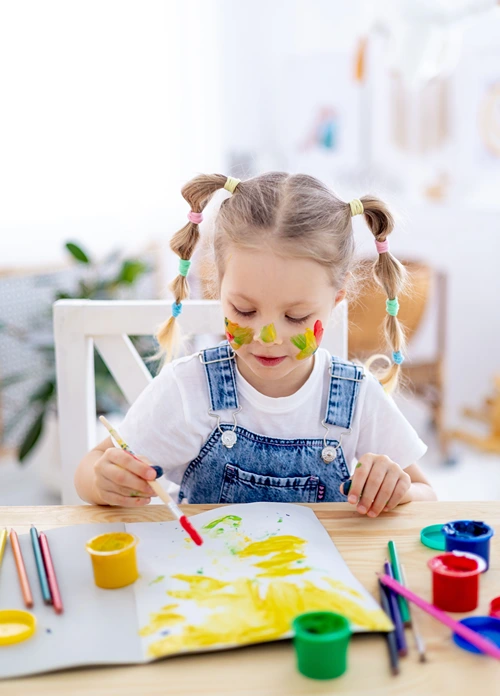Practical, Fun Tips for Teaching Art to Kids
Are you a current or aspiring art teacher for young children? Not every kid walks into class eager to pick up a paintbrush or sculpt some clay. These practical, fun tips will help you teach art to kids in an engaging, inclusive way that cultivates their confidence and unleashes their unique form of creativity.
Start With Simple, Open-Ended Projects
Art shouldn’t feel intimidating, especially for kids who might think they’re not artistic. Open-ended projects like abstract paintings, collage-making, or doodling with markers allow room for experimentation and personal interpretation. By starting with simple tasks, you create a safe space where kids feel more motivated to express themselves without fear of making mistakes.
Example Project
Encourage students to draw their feelings. This activity is approachable because it leaves so much room for interpretation and personalized creativity.
Incorporate Play Into Learning
Kids love to play, so why not make it part of your art class? Turn lessons into games or challenges to amp up the fun factor. For instance, try a timed drawing game where kids create a quick masterpiece in five minutes. Or have them start a drawing and pass it to the next student after 30 seconds; the result will be dozens of masterpieces that every student had an artistic say in.
You can also combine art with storytelling. Ask students to draw a monster, a superhero, or a magical creature. Then, have them pair up and create a short story about both drawings. You can even try themed craft days, such as having students try Minecraft art projects or other works based on their favorite TV show or video game. Truly, the possibilities are endless for playful creativity!
Offer Choices and Encourage Exploration
Kids thrive when they feel empowered to make their own decisions. Instead of limiting them to one type of art, make sure you stock your classroom with all the essential tools and media. By giving kids options, they’ll naturally gravitate toward what excites them most.
Try This
Create an “art buffet” with multiple stations that each feature different materials. Then, give students a loose prompt (like “create your dream city”), and watch how different styles and materials lead to totally unique results.
Teach Techniques with a Twist
Technical skills like shading, blending, and perspective are helpful to teach, but many young students might resist how academic technique instruction can feel. The good news is that it’s easy to make this part of art class more fun with hands-on and interactive methods.
For example, you can teach kids the beginning of color theory by having them spin a color wheel twice and blend together whatever results they get. They’ll soon realize what colors mix to make beautiful tones and not-so-pretty hues.
When technical lessons are tied to fun activities, students absorb more without even realizing it!

Celebrate Progress, Not Perfection
Teaching kids art isn’t about training them to be gallery-ready painters or sculptors. Rather, art is a powerful subject to encourage creativity, confidence, and patience in young minds—regardless of how “good” the art is. Celebrate every piece and help students believe in their creative powers, even if they don’t see it in themselves. If you are blessed with the role of teaching art to kids, this practical, fun trip will help you create an inclusive, dynamic class that your students will look forward to.






